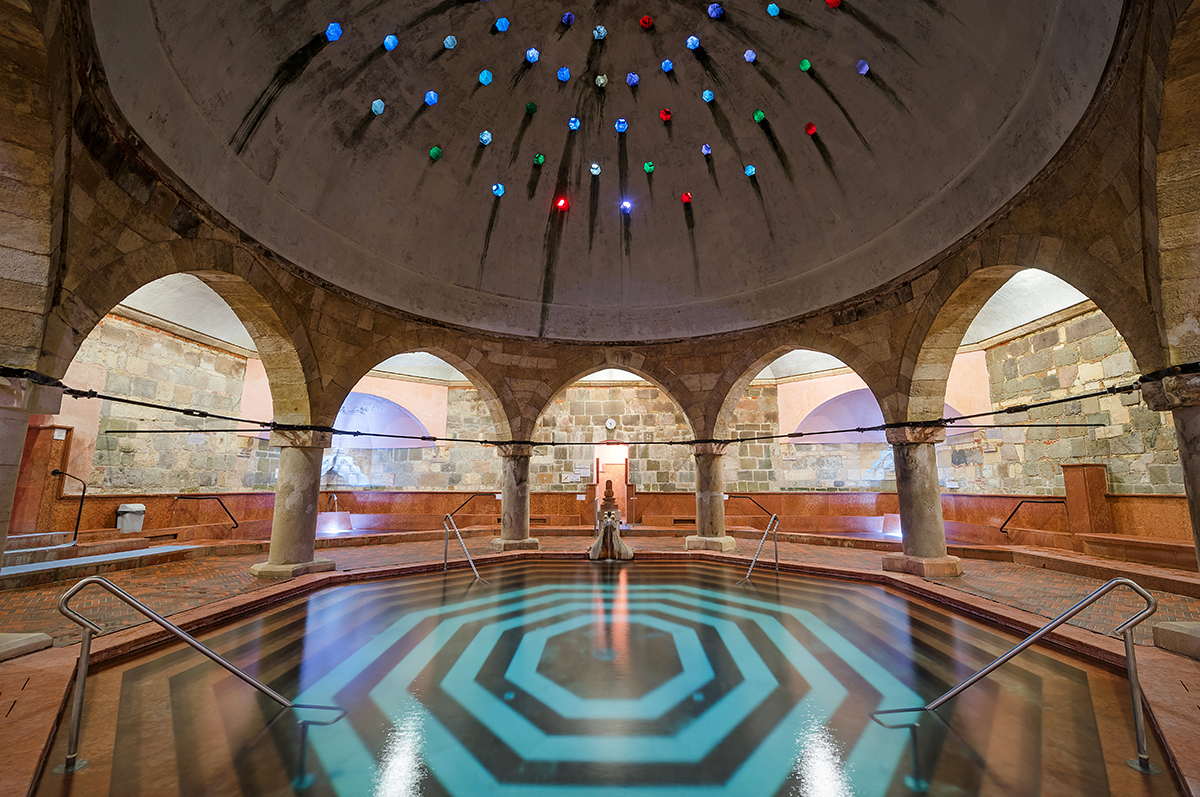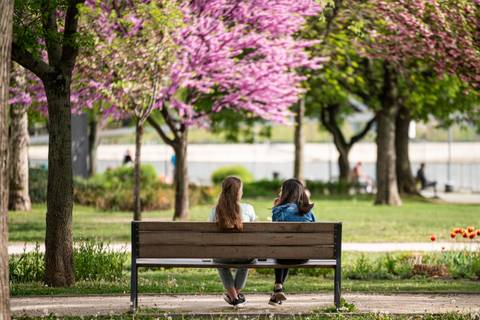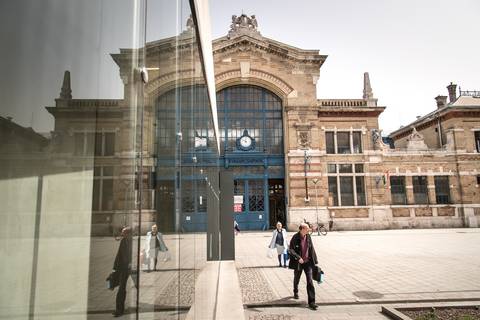Bathing in hot-spring waters is a Budapest tradition dating back centuries, and this living legacy is especially evident at any of these storied spas, all featuring different profiles, services, and distinctive atmospheres. The varied settings offer something for everyone – after all, some soakers prefer silent recreation while others favor a bit of bustle; some come for modern wellness services, others to enjoy an authentic Turkish bath; some dive into cold swimming pools like it’s a balmy pond, while others are itching to take a dip in a beer bath. We looked at four prominent baths where we can plunge into the past.
Király Bath
Király Bath, nestled in central Buda at the intersection of Fő Street and Ganz Street, is the only bath in this list without its own hot-water source. During Hungary’s era under Ottoman occupation, the Turks built this bath far from the springs to make sure that bathing would be possible even in case of a siege, within the walls of the Castle District. Then and now, the water was supplied from the area of the current Lukács Bath. While the original 1.5-kilometer-long pipe system has been replaced, a piece of the old pipe is still displayed in the building’s lobby.
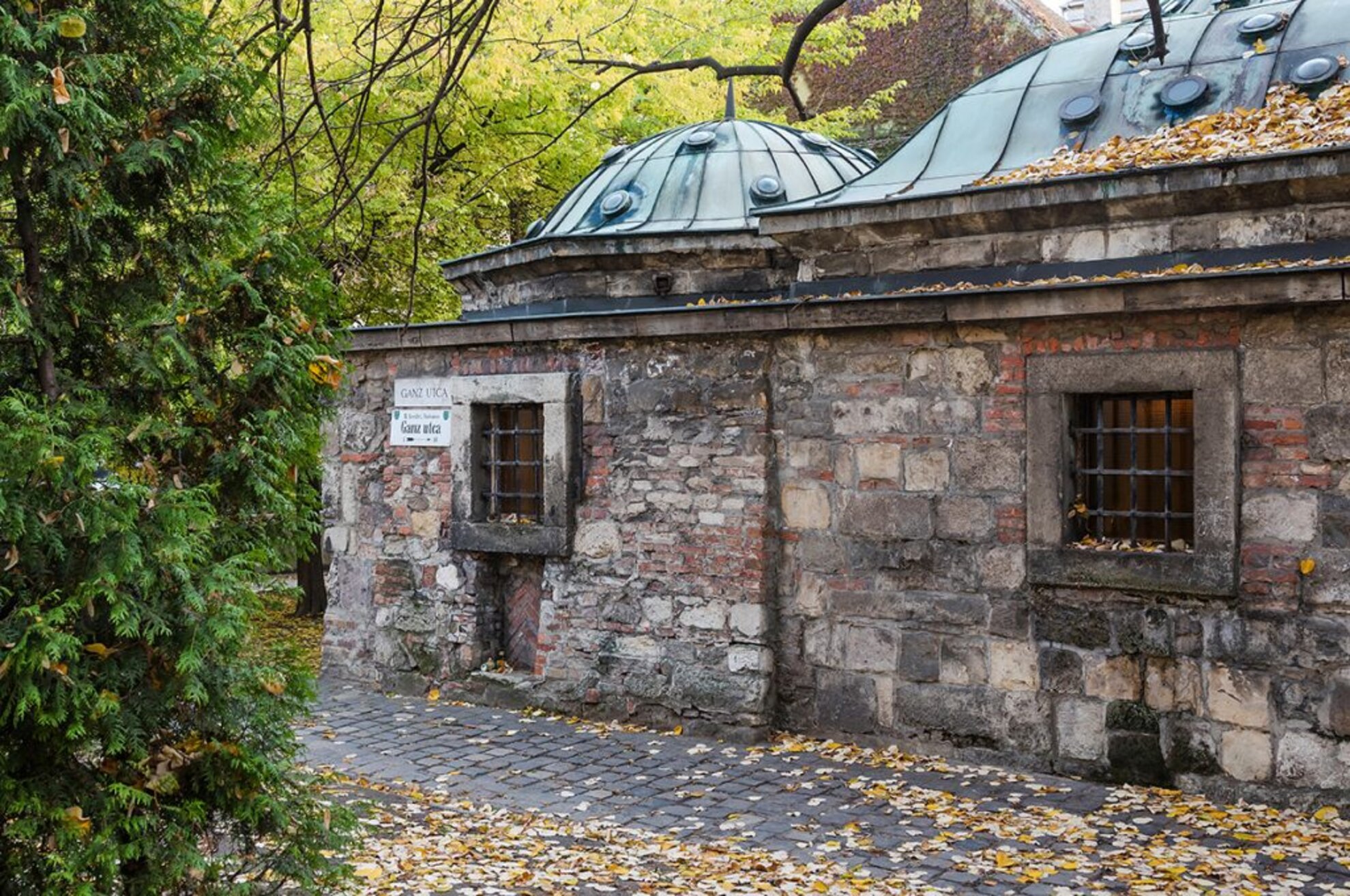
After Buda returned to Hungarian rule, this bath was acquired by the König family (Király=King=König) in 1796, who renovated and expanded the building with a Classicist wing, combining the old with the new while preserving the bath’s historic character. The last complete renovation of the bath, damaged heavily during World War II, was completed in 1950. Because of this, Király Bath looks a bit rough around the edges, but also retains a peculiar, medieval atmosphere: the walls that remain from the Turkish era and the romanticism of socialist realism captivate the hearts of tourists and adventurous youth alike, although the bath being less crowded and cheaper than other popular and larger baths might be a factor, as well.
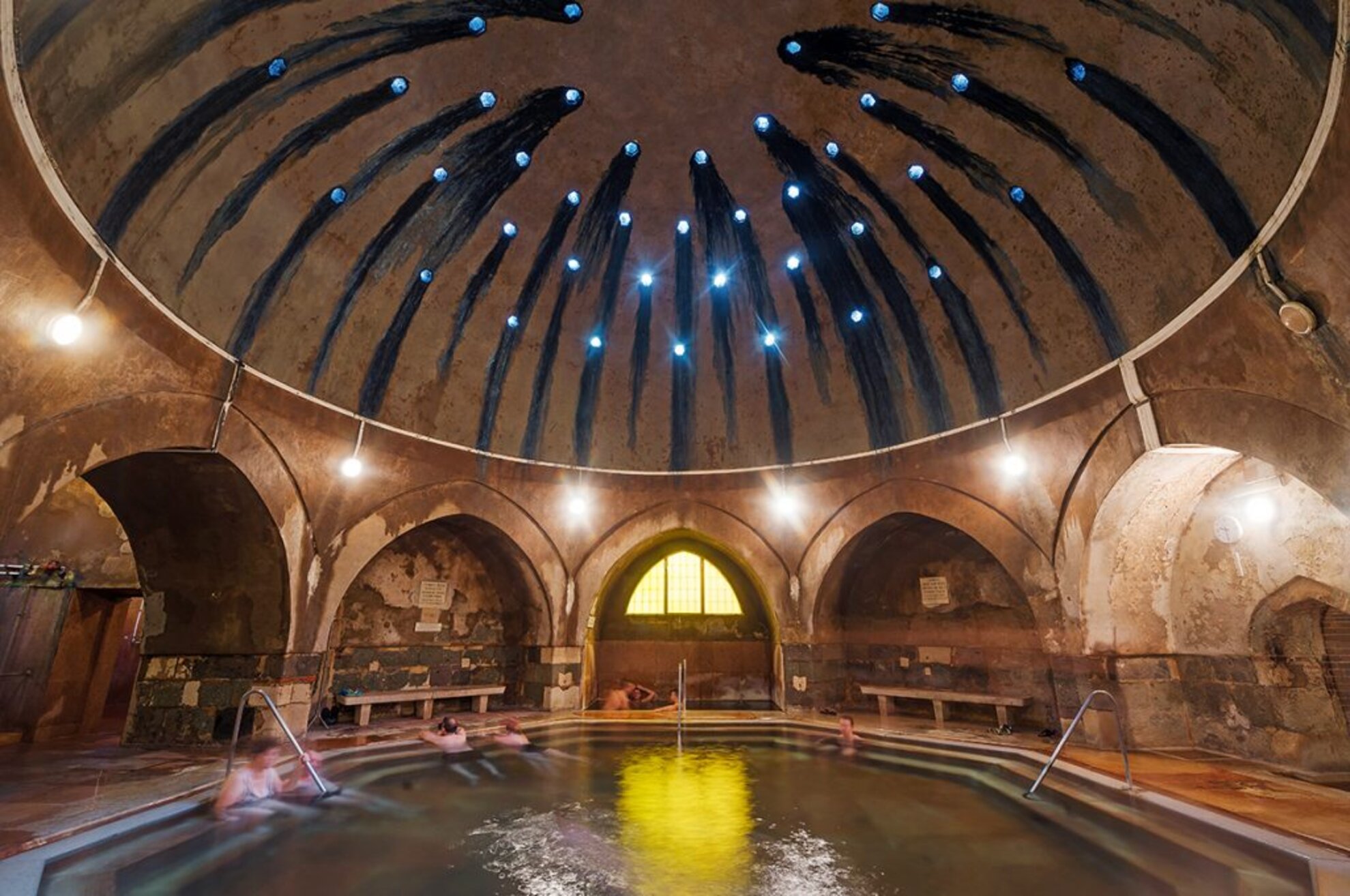
In Budapest’s baths, dressing rooms are separate for male and female guests, who can keep their belongings in a locker or cabin. The 100% humidity caused by the three 32-40°C thermal pools practically punches us in the face as we enter the Turkish bath, complete with various saunas and steam rooms. The inner garden awaits visitors with a cozy sunbathing area and a hot tub, while from the inner corridor, we can signal the waitstaff with a small bell to order food and drink. Renovation plans for Király Bath are under discussion, but a final decision has yet to be made.
Rudas Bath
Rudas Bath, located by the Buda side of Elizabeth Bridge, is an excellent example of how to combine the traditions of a 500-year-old Turkish bath with the expectations of 2017. The institution places great emphasis on traditions, so the Turkish bath has been open only to men on most weekdays since 1936; women, however, can also visit this historical venue without men around thanks to “ladies’ only” Tuesdays. This means that we can enjoy the benefits of Gellért Hill’s thermal waters buck naked under the beautiful dome, decorated with colorful stained glass that paints rainbow patterns on the water of the octagonal pool precisely at noon. There is a total of 21 thermal springs near Rudas Bath, supplying bathers with healing thermal water, and the bath itself was built by the same Turkish pasha who finished the building of Király Bath.
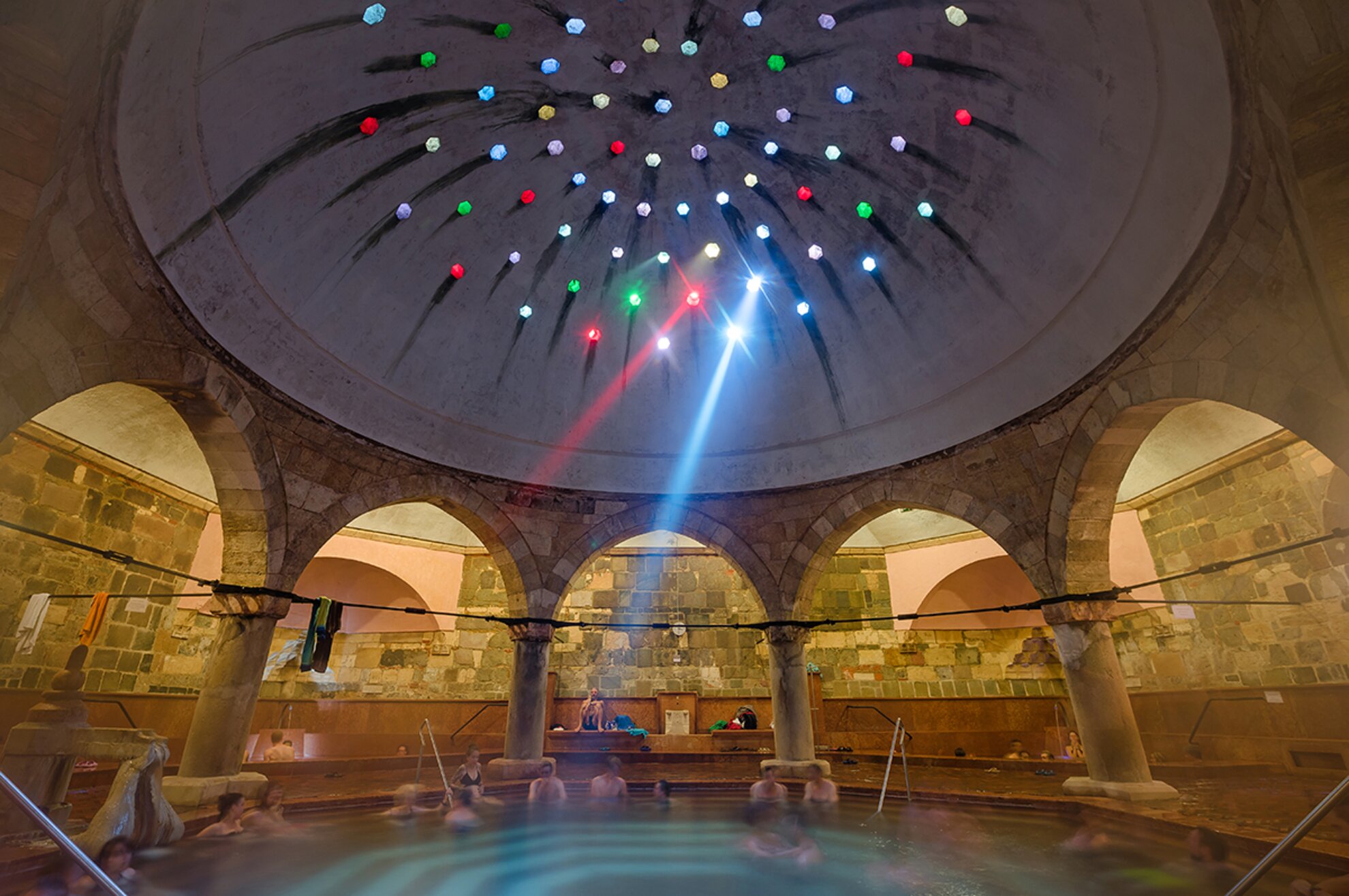
The authentic Turkish bath – including five thermal pools, various saunas, steam rooms, and a wet-and-soapy massage room – is available to both males and females on weekends. On “single-sex” days, those excluded can enjoy the same thermal water in the wellness section, established in place of the old Harmatvíz bottling company in 2014. The three-story complex is decorated with blue and yellow ram-head-shaped drinking fountains carved from Zsolnay porcelain, alongside thermal pools equipped with back-, foot-, and waist-massaging jets, as well as an immersion pool and a so-called “snow room” where visitors can cool down for a couple of minutes after using the sauna. The first floor houses a new restaurant, while the second floor is occupied by a 36°C rooftop pool, available year-round, from which we can enjoy a magnificent view of Budapest.

We can find more panoramic sunbeds here, overlooking the Danube and Gellért Hill, and walking further inside the building, we can also enjoy the adventure showers, salt cabins, and various saunas. The third great section of Rudas Bath is the sauna swimming pool, which has been operating since 1894 and thus possesses a historic atmosphere. Similar to the wellness area, this can be used with a separate ticket, as well. Massages are available here, too, as well as a great view of Gellért Hill.
Lukács Bath
Located near the Buda side of Margaret Bridge, Lukács Bath is a centuries-old medical mecca, as attested to by the numerous marble memorial plaques placed in the bath’s park, giving thanks to the institution and its medical staff in various languages. The bath, named after Luke the Evangelist (“Lukács” in Hungarian), was established by the Knights of the Order of Saint John, who settled in the area with the aim of curing the sick. Later, orders from Rhodes and Malta took over and established their own monasteries with the same healing purpose, while the building was transformed into a Turkish bath during the Ottoman occupation. Following the liberation of Buda, the popularity of Lukács Bath gradually declined. At the end of the 19th century, until Fülöp Palotay purchased the building and, after a complete renovation, reopened it as a spa hotel in 1884. The first section providing complex medical treatment, the day hospital, was established in 1979; patients of the National Institute of Rheumatology and Physiotherapy have direct access to the thermal pools.
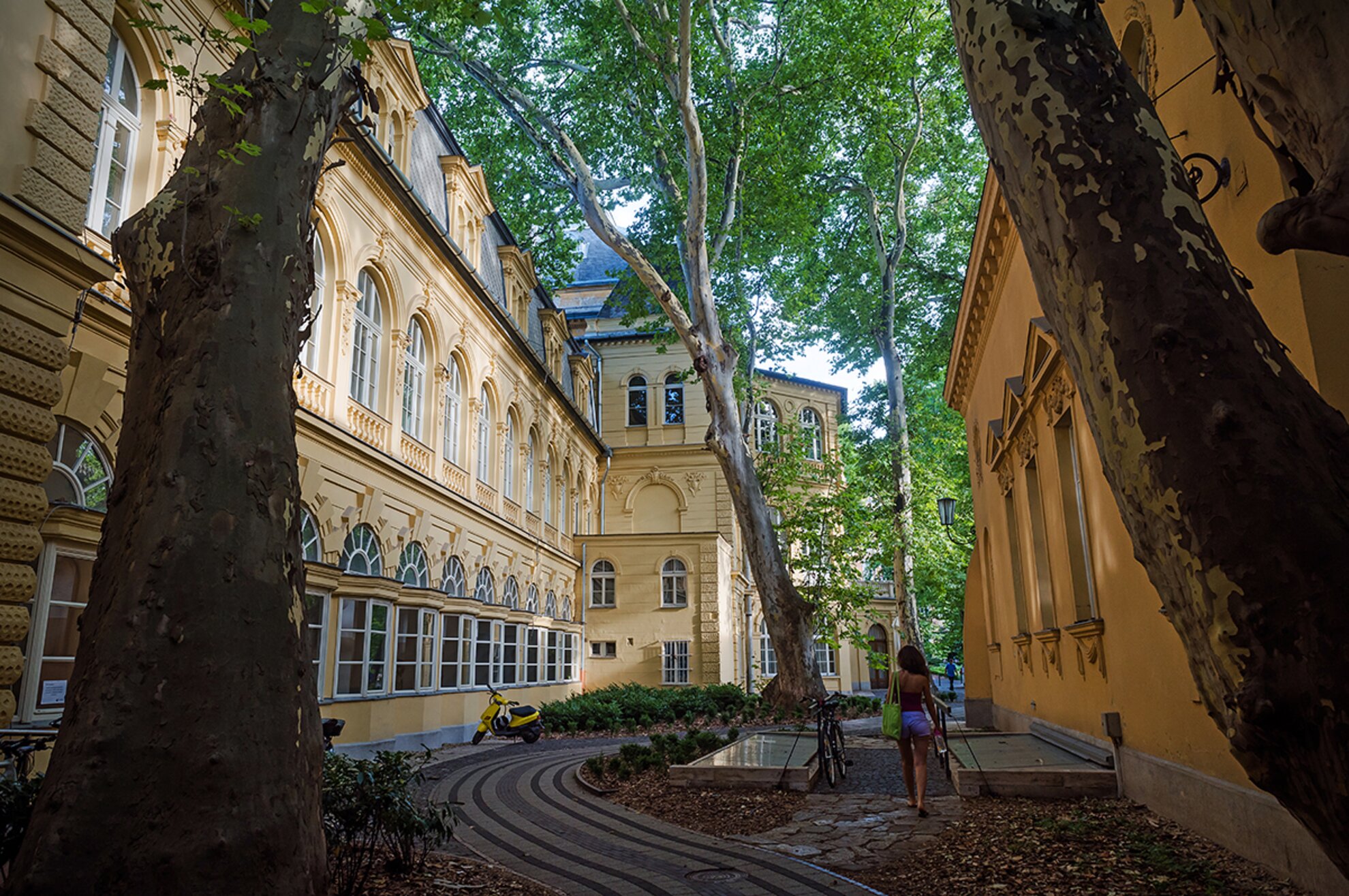
The territory of the bath, renovated in 2013, is simply enormous – visitors have to cut through the yard to reach many departments of the institution, like the salt chamber and the southern pools. This is where we can access the National Institute of Rheumatology and Physiotherapy, as well. The multiple-story building houses an outdoor 33°C hot tub with a lazy river and underwater massage, two cooler swimming pools, and a pool for medical purposes like water workouts and weight baths, as well as numerous massage services, an outdoor fitness park, and a sun deck.
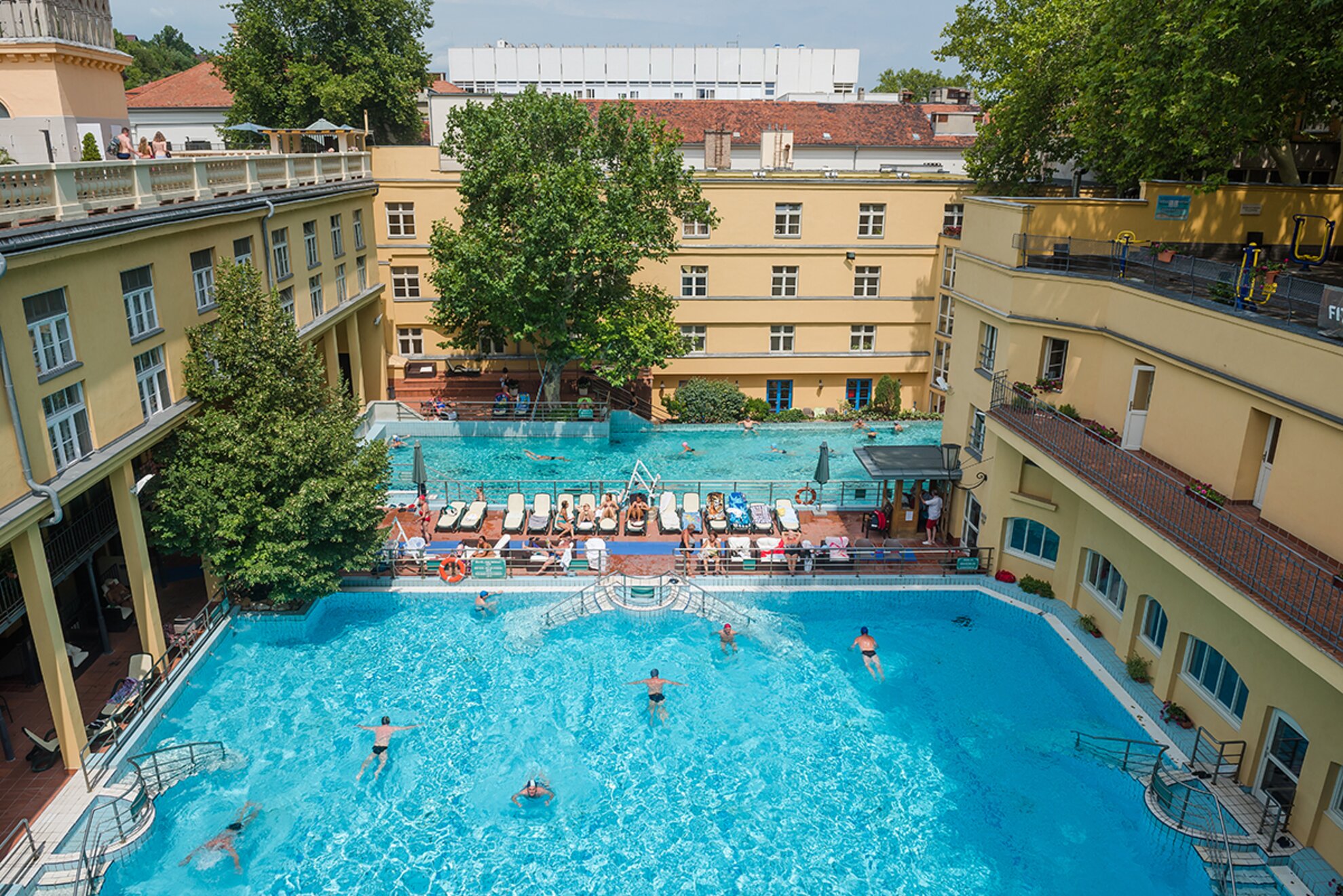
The thermal bath – complete with a dome, three pools, saunas, and steam rooms – might appear similar to a Turkish bath, although officially, it doesn’t make the cut. While numerous smaller saunas are available throughout the bath, we can also relax in the well-equipped sauna section with a special ticket. Near the hot tub, we find two cafés, and similar to other baths, private bath facilities are also available in Lukács Bath.
Lukács Bath is a popular meeting place among intellectuals, and its thermal water, supplied by a 30-meter-deep spring in Molnár János Cave, is said to be the highest quality among all the city’s baths.
Széchenyi Bath
Széchenyi Bath, Hungary’s most internationally renowned spa, opened in 1913. Popular among tourists, this place isn’t about quiet relaxation but curious crowds flocking in to admire and enjoy the historic bath. The circular arrangement gives this gem of City Park a special atmosphere: the cabins’ corridors and the symmetrical inner section encircle the three outdoor pools.
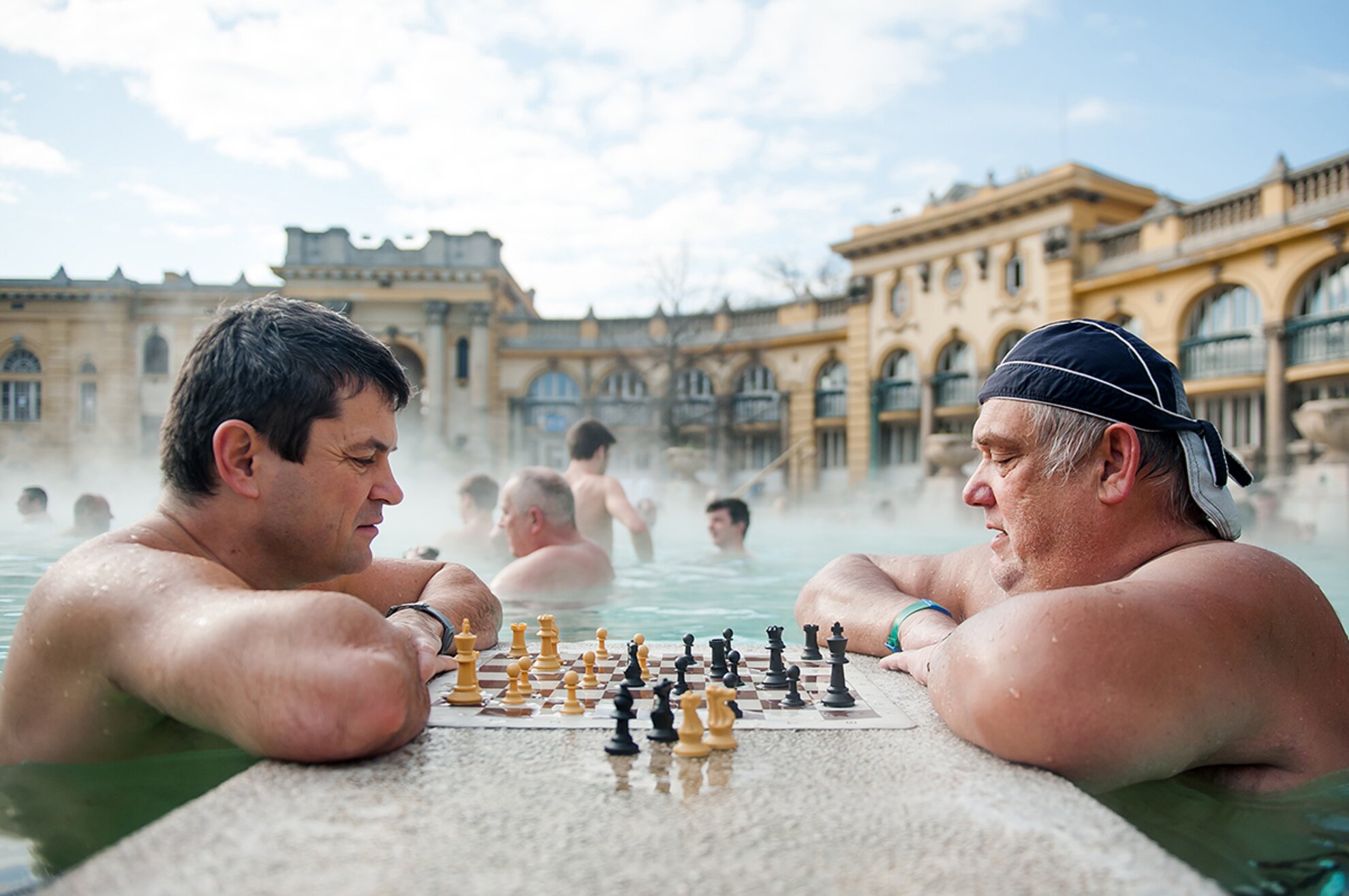
Thermal baths have a great tradition in Buda ever since the Ottoman occupation, but the Pest side of the city lacked such baths until 1913. Széchenyi Bath, built according to the plans of Győző Czigler, had problems with its water supply, and thus was fairly unpopular until 1939, when its second artesian well was discovered. The bath started offering mud baths and various medical treatments after World War II, and today visitors can indulge in so many services that we don’t even bother listing them. We can also enjoy various massage services, and if we’re in the mood to sunbathe naked, we can freely do so on the rooftop sun deck, segregated by genders.

The architectural style of the building blends Classicist and neo-Renaissance elements. Bath culture appears in the decorations: fish, mermaids, and other aquatic creatures swim on pedestals and tiles. Imre Fracsek designed the bath’s outdoor area in 1926, decorated with more Renaissance elements, statues, and fountains. The colorful stained-glass windows of the wonderfully decorated dome are the work of masterful Magyar artist Miksa Róth.
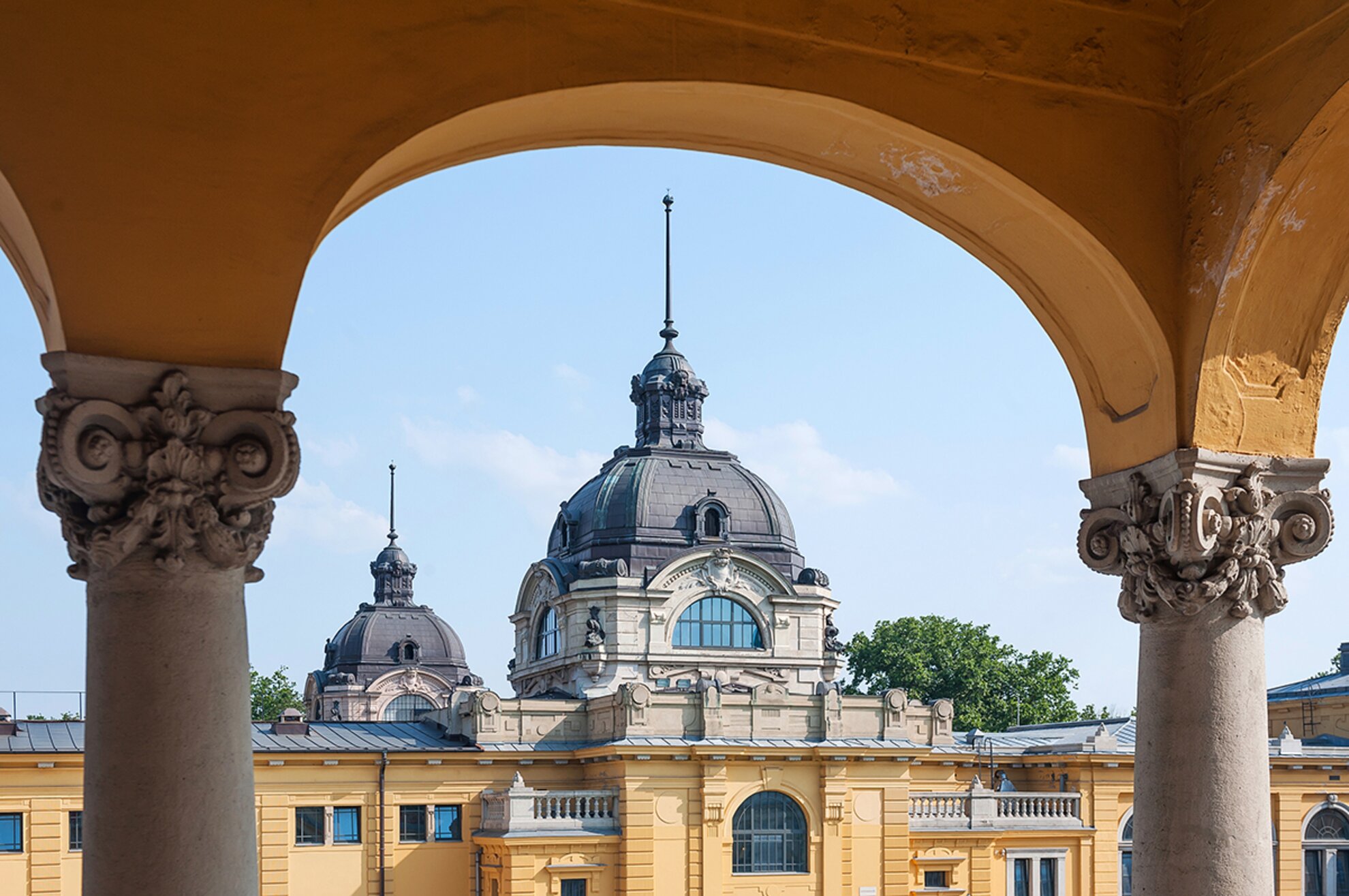
Széchenyi Bath is the largest bath of Budapest, and also of Europe, as well, so it’s no wonder that visitors spend most of their time here exploring the building complex and admiring its attractions. Thanks to its large windows, the indoor section is brighter than most thermal baths, and it houses 11 thermal pools, as well as steam rooms and showers. Three pools are only available to guests with a medical referral, which still leaves regular guests plenty of places to hang out. Below the two staircases leading inside, a huge sauna with a relaxation area and plunge pools awaits. Two of the outdoor pools are 32-34°C, while the one at 26°C can only be used with a swim cap. Visitors can take a dip in the medicinal waters during nighttime events, as well, or try the special “beer spa”, where they can soak in two-person tubs while drinking freshly tapped cold suds.
This article is sponsored by the Bp2017 Nonprofit Kft.
